- Our Products
- Upper Extremity
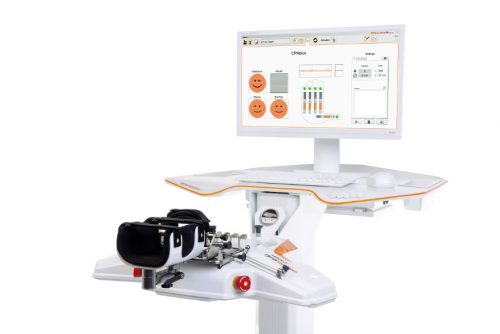 Amadeo Finger-Hand-Rehabilitation
Amadeo Finger-Hand-Rehabilitation
Amadeo is giving hands back their grip and fingers their finesse. Patients who are barely able or unable to grasp can perform hundreds of robot-assisted grasping movements. It won’t train a new Mozart. But it will help patients return to the piano, handwriting Christmas cards, and grabbing life firmly by the horns.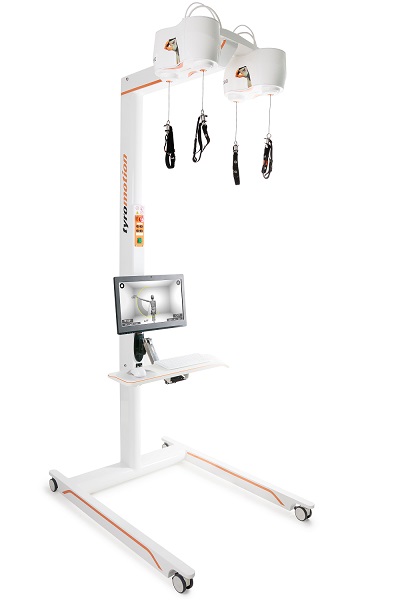 DiegoShoulder-Arm-Rehabiliation
DiegoShoulder-Arm-Rehabiliation
Diego is designed to strengthen what’s important. Whether proximal or distal training, Diego purposefully supports the rehabilitation of natural motion, allows the handling of everyday objects to be relearned, and is usable by adults and children alike.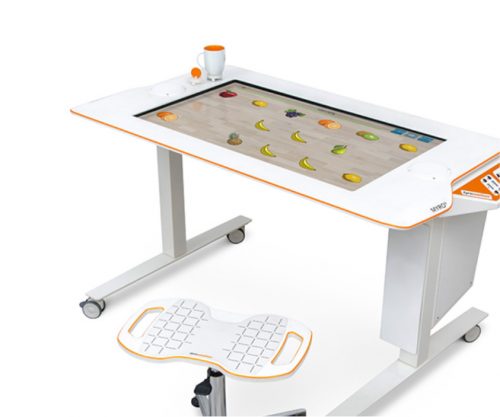 Myro Interactive and task-specific therapy
Myro Interactive and task-specific therapy
Myro is made for making humans get better! The sensor-based surface enables task-oriented rehabilitation with real objects, trains the patient’s cognitive abilities, and improves motor abilities of the upper extremity.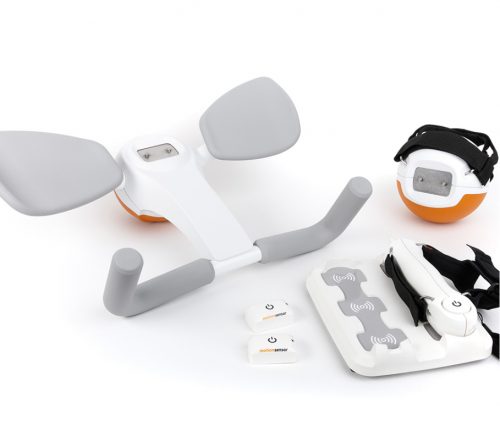 Pablo Upper Extremity Rehabilitation
Pablo Upper Extremity Rehabilitation
As a multifunctional rehabilitation device with comprehensive accessories, Pablo enhances classical therapy exercises with biofeedback, objective assessments, and gamification. It won´t train the next Picasso. But it will help patients to take back control of their lives.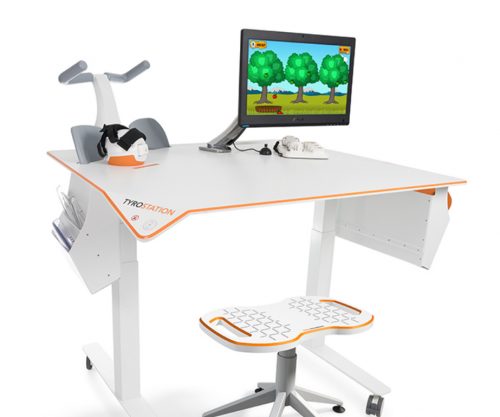 Tyrostation The perfect therapy setting
Tyrostation The perfect therapy setting
The Tyrostation is home to all components of Pablo and Tymo and provides ergonomic adaptability for patients. Sometimes, it´s about the little things in life – or therapy.
- Lower Extremity
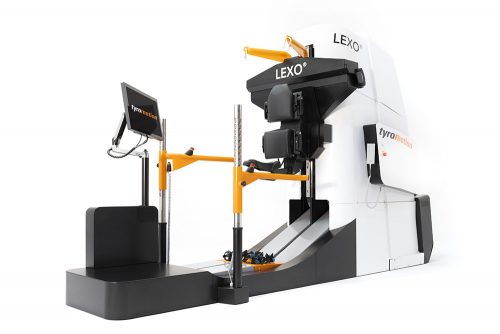 LexoGait and Locomotion
LexoGait and Locomotion
Lexo is a revolutionary gait trainer and impresses with fast setup, high patient activity and optimal trunk support. It encourages active participation and enables therapists to focus fully on their patients.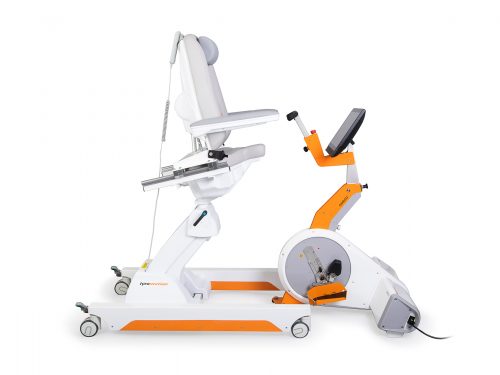 Omego Plus Gait training for the goals across all phases
Omego Plus Gait training for the goals across all phases
More than just a therapy bike! Omego Plus combines uni- and bilateral leg training, leg press, stepper, cycling & foot lift training in one device. Stride stronger with Omego Plus!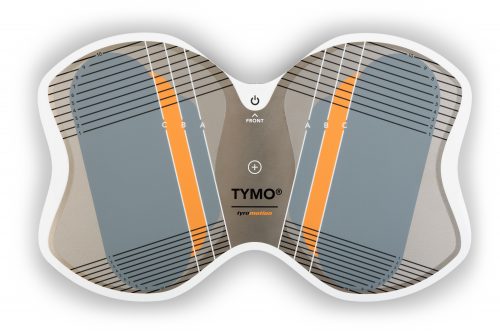 Tymo Balance training and postural control
Tymo Balance training and postural control
Small but powerful! Tymo is a versatile measurement and therapy system for the whole body. In addition to the standing position, Tymo offers a wide range of options for maximum variety during therapy.
- MTT-Line
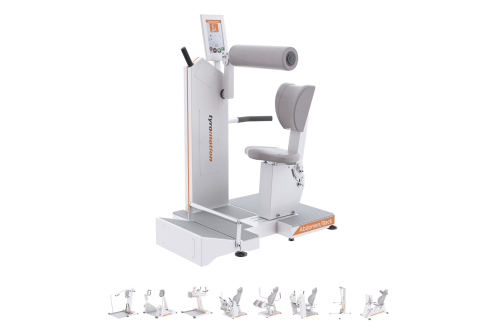 MTT-LineMedical training therapy
MTT-LineMedical training therapy
Get back in the game with the MTT-Line! The Medical Training Therapy devices are specifically designed to strengthen the six major muscle groups of the human body. Barrier free and maximum adjustability make the devices accessible for all types of patients.
- Software
 Maya Therapy Platform
Maya Therapy Platform
Maya reduces paperwork, standardizes documentation, and automates reporting, making administration effortless and efficient. Designed for therapists to work wonders!
- Upper Extremity
Rehabilitation
Kinesio taping in neurology as a useful therapy supplement
Saskia Wibner ●
21. March 2023 ● 5 minutes
What exactly is a K-tape?
This “colorful plaster” is an elastic cotton band with a specially applied acrylic coating that is stuck to the skin. It is called K-tape, kinesiology tape or kinesio tape. In the remainder of the following article, it will be called K-tape. It is stretchable in the longitudinal direction and has similar elasticity to the self-stretch of human muscle. It is also permeable to air and water, which makes it well tolerated. K-tapes are mostly used in four different colors, all of which have the same properties.
Classic taping vs. Kinesio tape
The elastic material is what distinguishes K-taping from classic taping. In classic taping, an inelastic material is used because in this case joints are to be stabilized or immobilized. This is intended to restrict freedom of movement. At the beginning of the development of K-tape, the focus was on influencing the muscular system via proprioception – the self-perception of the body in space. However, it was important that the freedom of movement was not restricted. Hence the name Kinesio tape, which is derived from the Greek word kinesis for movement. The application of K-tape to the skin affects the skin receptors in exactly that area. This in turn affects proprioception, muscles, the ligaments, and thus ultimately body functions. From the initial muscle applications, a wide treatment spectrum of K-taping has developed.
How does the K-tape work?
There are a great many receptors in our skin layers that detect pressure, touch, traction, cold or heat and transmit these stimuli to the brain. The skin layers also contain blood and lymph vessels as well as nerves embedded in the connective tissue. By applying K-tape to different areas of the body, specific problems can be targeted.
There are 4 different application techniques:
- Muscle applications: This type finds its application in cases of injuries of the muscles, high or low resting tension of the musculature (hyper-/hypotonus) or impaired muscle activation.
- Ligament applications: This technique supports the ligament structures and is therefore used for injuries and overloads of ligaments and tendons.
- Correction application: Here we distinguish between functional correction systems and fascia correction systems. A functional application causes a shift in the position of a bone that is in a malposition and helps to correct it. Fascia correction applications assist in loosening fascia and can provide relief from pain.
- Lymphatic applications: This type is used to help lift the skin and thus promote the drainage of lymphatic fluid.
The application of a K-tape always influences all of the above-mentioned areas at the same time. The shifting of the skin during movement acts on the mechanoreceptors in the skin, thus achieving pain attenuation.
When should K-tape not be used?
Tapes should not be used on open wounds, scars that have not yet healed, thin parchment-like skin, or in cases of known allergies to acrylic. Caution is also advised with reactions to silicone. If blood thinning medications are taken, small hemorrhages may occur in the skin due to the lifting effect of the taping system. Some people also experience itching or wheals. If the tape is not suitable, it can be removed independently at any time. It is much easier to remove if you apply a little oil – such as olive oil or coconut oil – to the tape.
How can K-tapes be used in neurorehabilitation?
There is now some research showing that K-tape applications can lead to significant improvements in a wide variety of neurological problems. The use of K-tapes improves the function of the upper and lower extremities in cases of paralysis or weakness, for example after a stroke. Pain that can occur due to subluxation or partial dislocation of the shoulder joint – i.e. an enlargement of the joint space due to a lack of muscle tension when the arm is paralyzed – could thus be significantly reduced. The subluxation itself could also be reduced by applying K-tape. With regard to balance function and walking, a positive effect was also achieved through the additional use of K-tapes. Swelling of the hand after a stroke can also be positively influenced by lymphatic tape application.
Examples of K-taping in neurorehabilitation
Pain reduction in subluxed shoulder joint & reduction of subluxation
A stroke can leave one side of the body paralyzed. Reduced muscle tension and the force of gravity acting on the paralyzed arm in an upright body position often lead to subluxation. This can cause pain due to traction on the ligamentous structures and tendons as well as the joint capsule.
Attaching a K-tape can …
…increase the tone – i.e. the tension – in the muscles.
…promote the use of the paralyzed side by the constant activation of the skin receptors. When the paralyzed arm can be felt better, injuries can be prevented.
…improve the lymphatic drainage and blood circulation.
…reduce the pain by stimulating the mechanoreceptors in the skin.
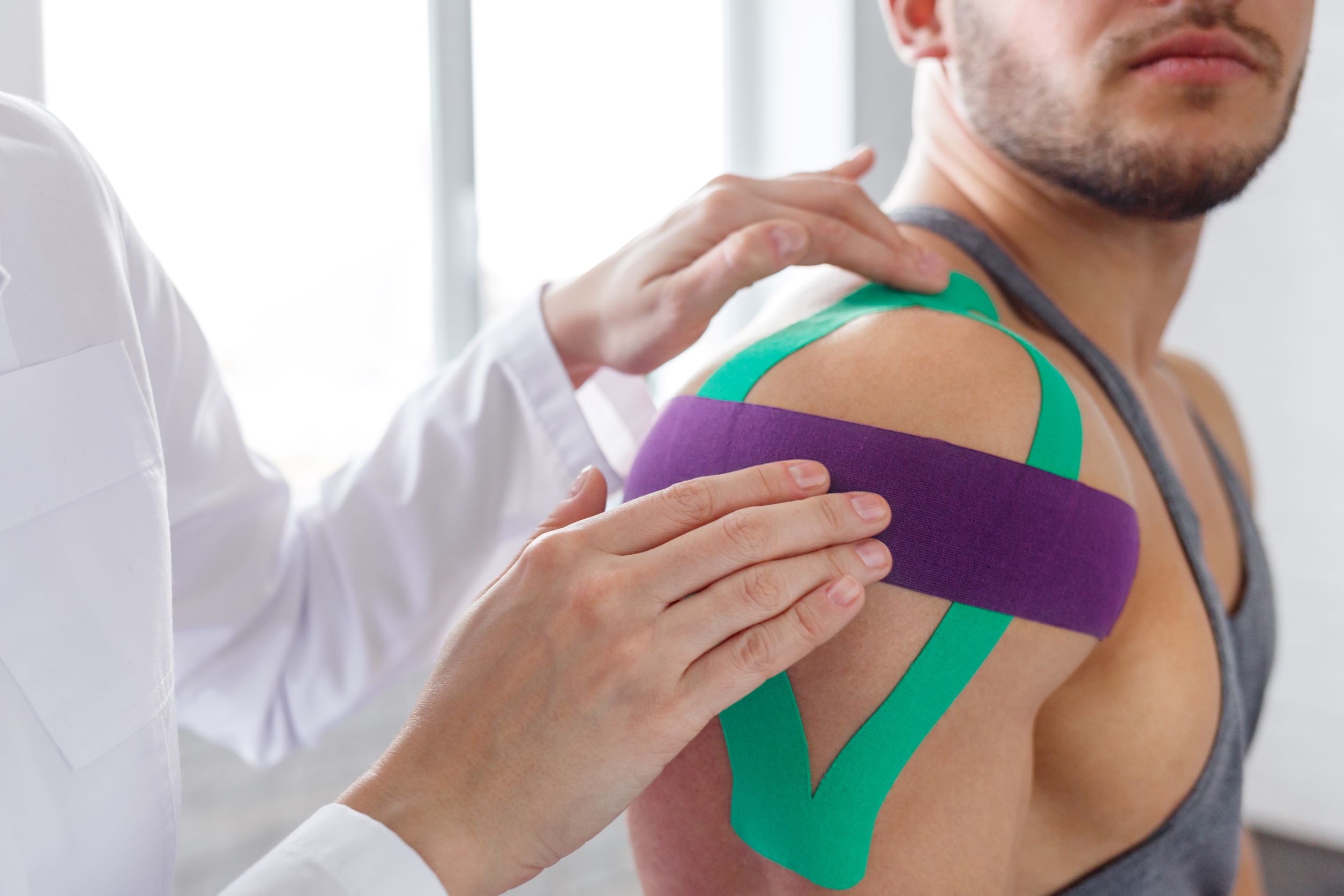
In the case of subluxation of the shoulder joint, the application of a K-tape can reduce the subluxation itself and the pain (sample image).
Activation of the foot lifting muscles
Often after a stroke, there is an imbalance of muscle tension in the leg. This predominantly manifests as a weakness of those muscles that are responsible for lifting the foot, or dorsiflexors. If there is weakness in the dorsiflexors, the lack of muscle strength means that the forefoot can barely be lifted, if at all, when walking. As a result, there is a risk of the foot getting caught on uneven ground, which greatly increases the risk of tripping and falling. An activating K-tape application on the foot-lifting muscles can have a supporting effect here.
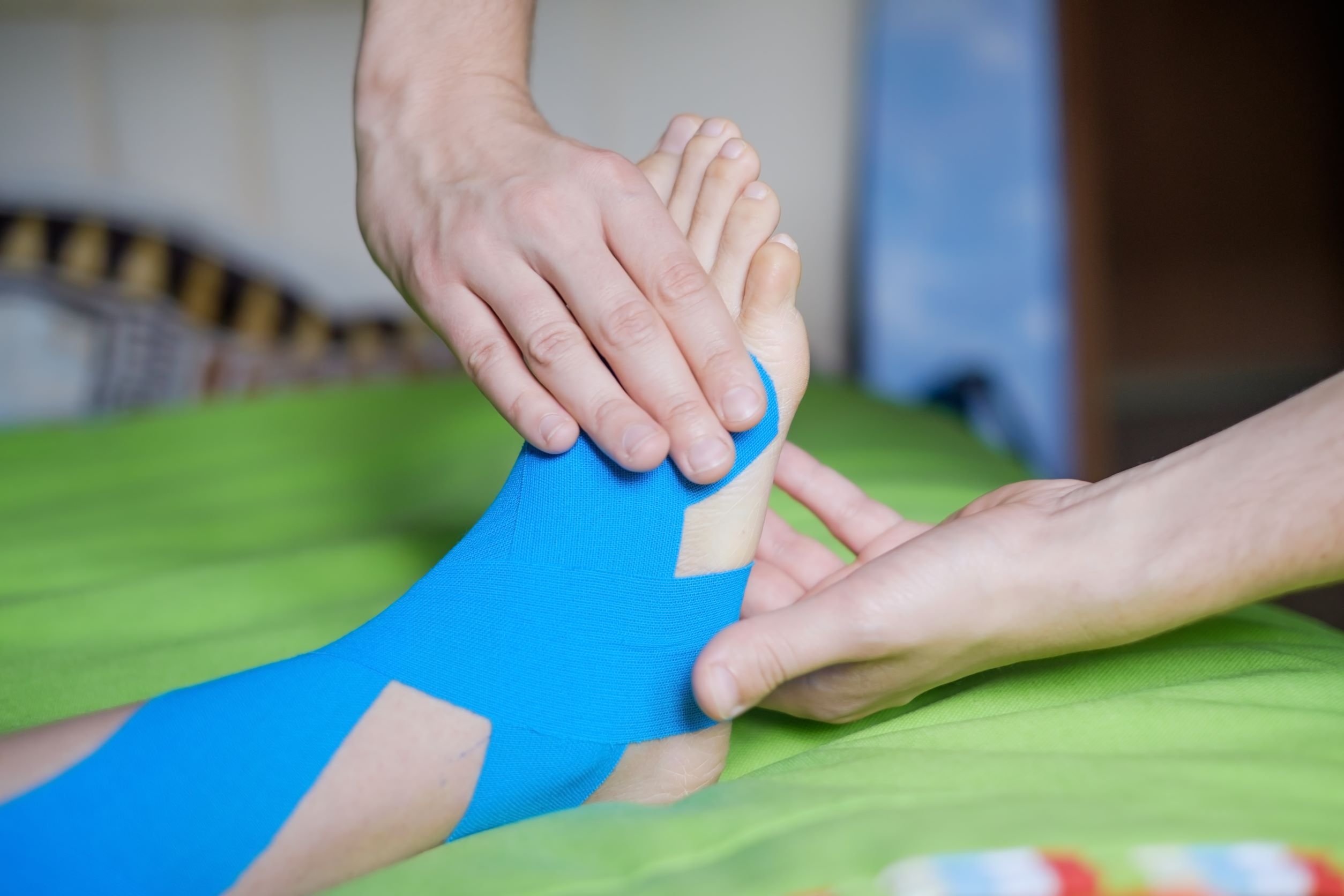
Often after a stroke, a weakness in lifting the foot remains, which can be treated supportively with K-tapes (sample image).
Hand edema – reduction by means of lymphatic tape
If the back of the hand is swollen, this is called hand edema – another very common symptom after a stroke. First, lymphatic drainage is impaired, which is often related to the absence of muscle activity in the hand, and therefore hand movement is limited. Second, affected persons do not feel their hand well, so the hand may not be positioned properly or may be pinched without the person noticing. All this can further increase the swelling and intensify the pain.
Through the application of a lymphatic K-tape, the…
…lymphatic drainage is improved.
…use of the hand is promoted.
…hand is better seen, perceived, and noticed because of the bright colors.
…worsening of symptoms is counteracted.
The use of a K-tape can be a useful therapy supplement for various neurological disorders. The main advantage is that the effect of the K-tape supports the therapy and continues after the therapy as long as it remains on the skin. In this regard, ask your therapist if the application of a K-tape is useful for your impairments.
Literature:
Efficacy of the application of kinesio tape in patients with stroke
Kinesio Taping for Balance Function after Stroke: A Systematic Review and Meta-Analysis
https://www.hippocampus.de/media/316/cms_4f97a7c19957f.pdf
Birgit Kumbrink, Springer : K-Taping, Praxishandbuch, Grundlagen – Anlagetechniken – Indikationen
You might also be interested in
4. April 2023
Health
Rehabilitation
Stroke nutrition guidelines for optimal health
Nutrition as the key part in health and well-being of stroke survivors A healthy, balanced …
21. March 2023
Rehabilitation
Kinesio taping in neurology as a useful therapy supplement
The Kinesio tape and its usefulness in neurological therapy What was originally known only from …
7. March 2023
Rehabilitation
Exercises against freezing of gait in Parkinson’s disease
When the legs freeze – how does the symptom “Freezing of Gait” manifest itself? Parkinson’s …



 Contact
Contact 
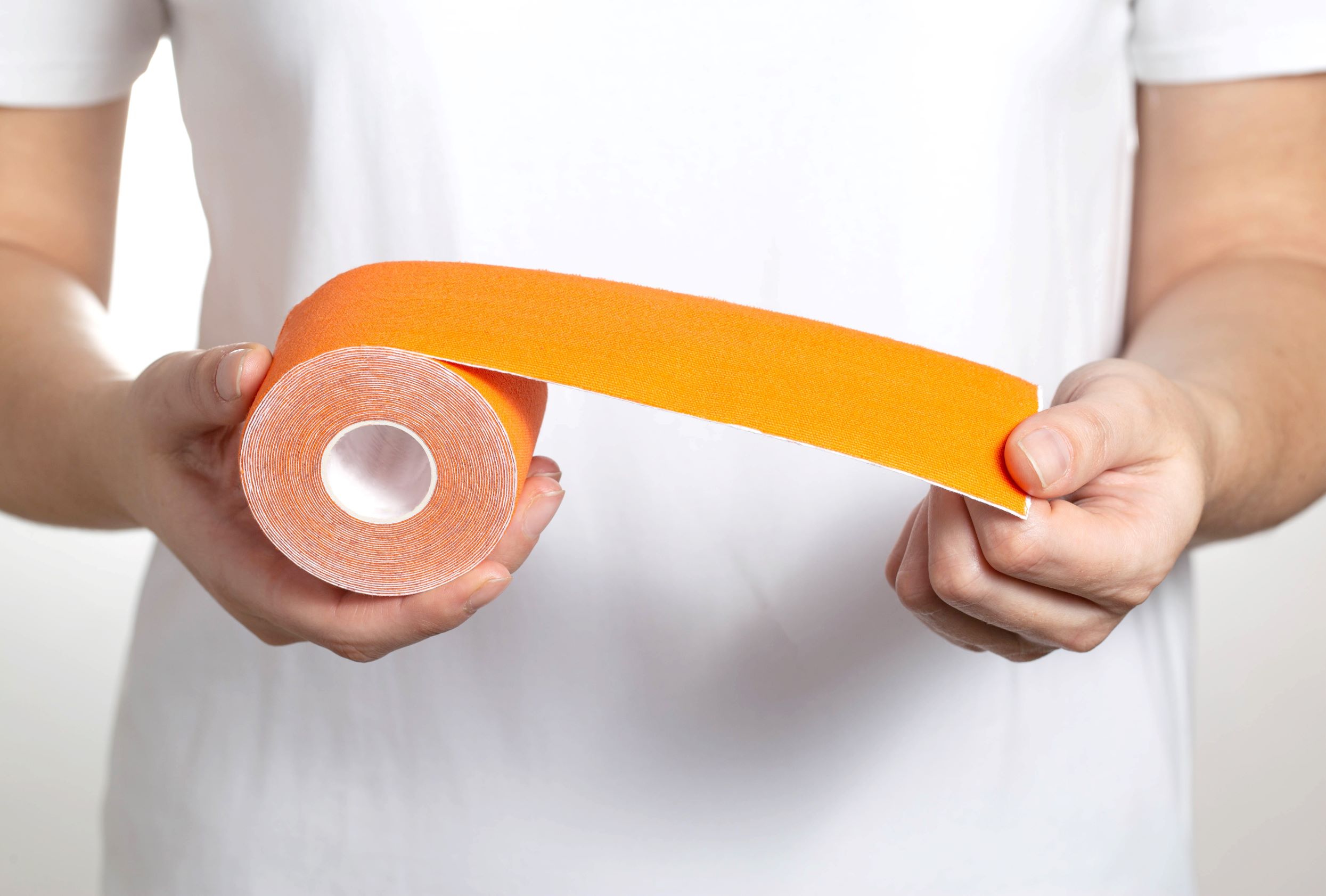

 Contact
Contact 

